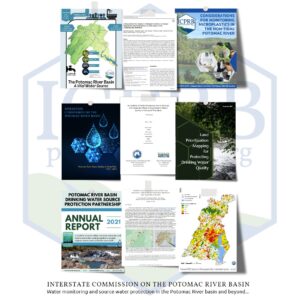During the lead up to the annual Maryland Water Monitoring Conference (MWMC), we at ICPRB take stock of the projects and reports that we tackled over the past year that are related to monitoring waterways throughout the basin and beyond. We enjoy sharing these projects, discussing ideas, and collaborating with colleagues on future work. Below is a list of the products that we will be featuring at our table at this year’s MWMC. If you will be attending the conference on December 15, please come by and say hi! We’ll have a lot of information, (free!!) maps, and other goodies to share.
Click on the image to open the project in a new tab.
ICPRB’s Featured Source Water Protection and Monitoring Projects for 2022
Source Water Protection MapA map with information about the people and resources of the Potomac River Basin: A Vital Water Source. |
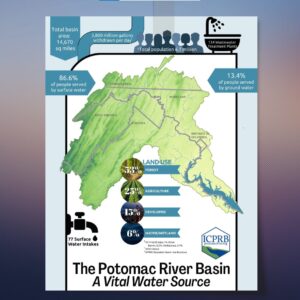 |
Linking Altered Flow Regimes to Biological Condition: an Example Using Benthic Macroinvertebrates in Small Streams of the Chesapeake Bay WatershedRegionally scaled assessments of hydrologic alteration for small streams and its effects on freshwater taxa are often inhibited by a low number of stream gages. To overcome this limitation, we paired modeled estimates of hydrologic alteration to a benthic macroinvertebrate index of biotic integrity data for 4522 stream reaches across the Chesapeake Bay watershed. |
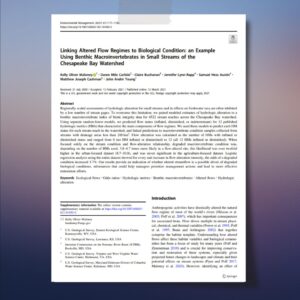 |
Considerations for Monitoring Microplastics in the Non-Tidal Potomac RiverThe Interstate Commission on the Potomac River Basin’s 2022 Clean Water Act Section 106 Potomac Basin Water Quality Improvement grant included an activity to “assist water suppliers in VA, MD, and DC in developing microplastic sampling and analysis methodologies and conduct field sample collection.” This white paper, which explores the feasibility of a microplastic monitoring program in the nontidal Potomac basin, represents the output for this activity. Section 2 describes considerations for collecting and processing samples for microplastics analysis. Section 3 provides a brief explanation of analytical methods and quality control recommendations for the detection, quantification, and identification of microplastics. |
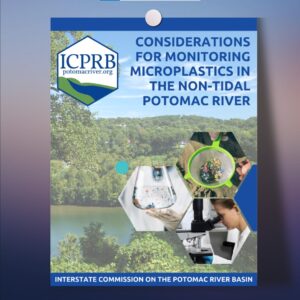 |
Potomac River Water Quality at Great Falls: 1940-2019This report focuses on changes in temperature, hardness, pH, total solids, chloride, nitrate, and sulfate over the 80 years since ICPRB was formed in 1940. |
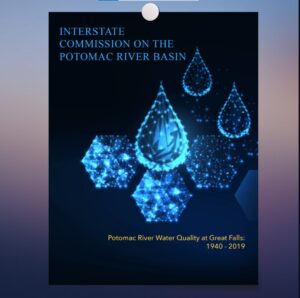 |
An Analysis of Pooled Monitoring Data in Maryland to Evaluate the Effects of Restoration on Stream Quality in Urbanized WatershedsThe Interstate Commission on the Potomac River Basin (ICPRB) and the Center for Watershed Protection (CWP) conducted a study to evaluate the effectiveness of stormwater management activities in central Maryland. |
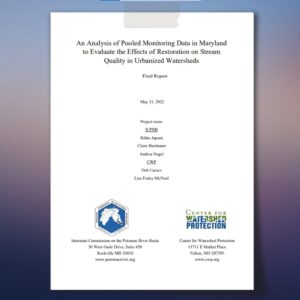 |
Land Prioritization Mapping ProjectThis StoryMap explores the Land Prioritization Mapping Project which aims to assist land conservation organizations in prioritizing specific parcels of land in the Potomac River basin to obtain the most drinking water quality benefits. |
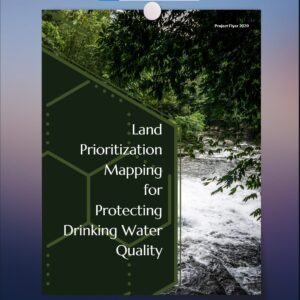 |
Potomac River Basin Drinking Water Source Protection Partnership (DWSPP) Annual ReportDWSPP is a coalition of water utilities and state, interstate, and federal authorities working together to amplify regional source water protection since 2005. |
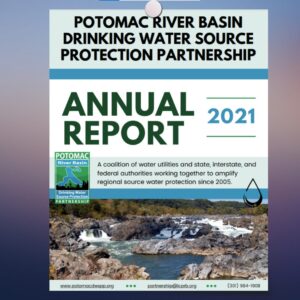 |
Rapid Response Survey of Cyanobacteria Toxin Levels Downstream of North Fork Shenandoah River Algal Bloom After Tropical Storm Ida, 2021ICPRB staff track a multi-species algal mat from thhe North Fork off the Shenandoah River to the lower reaches of the river using ICPRBS Emergency River Spill Model. |
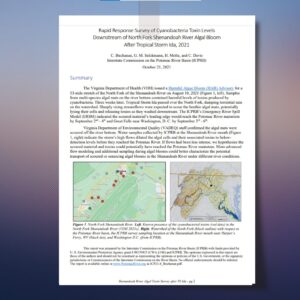 |
“Chessie BIBI” Stream Health IndicatorThe Chesapeake basin-wide index of biotic integrity for stream macroinvertebrates, or “Chessie BIBI,” is a multi-metric index of biological health for freshwater streams and small, wadeable rivers in the Chesapeake Bay watershed. |
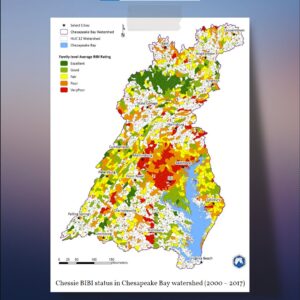 |

